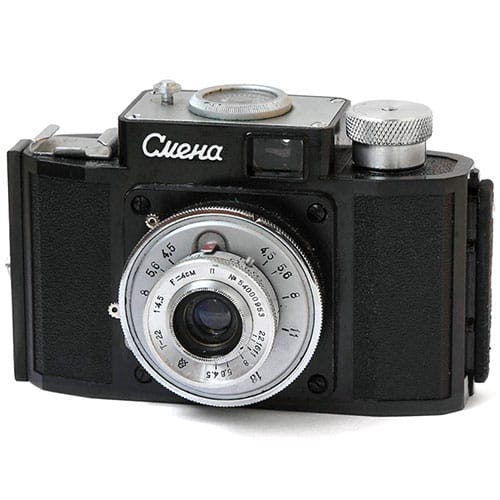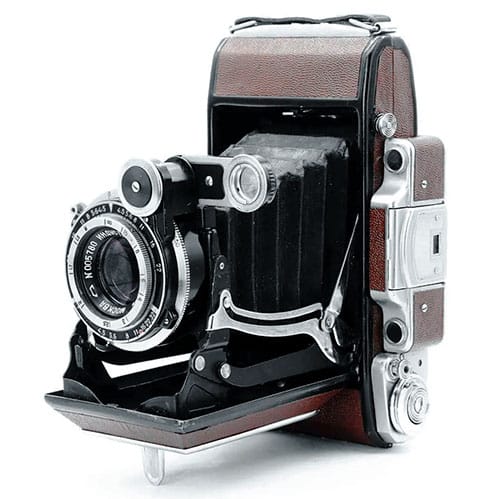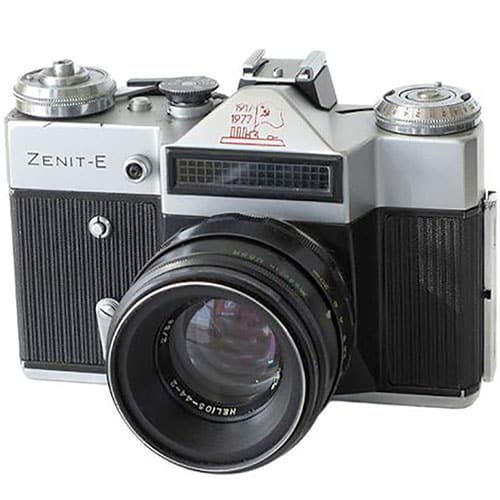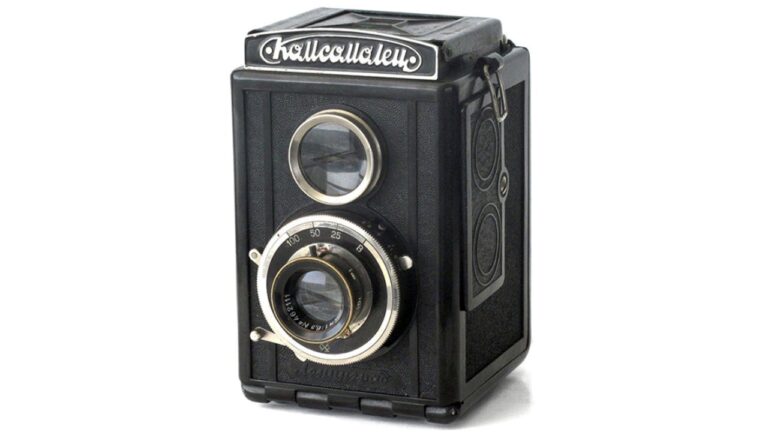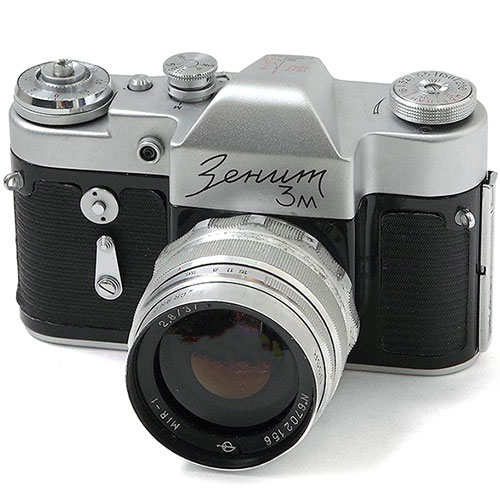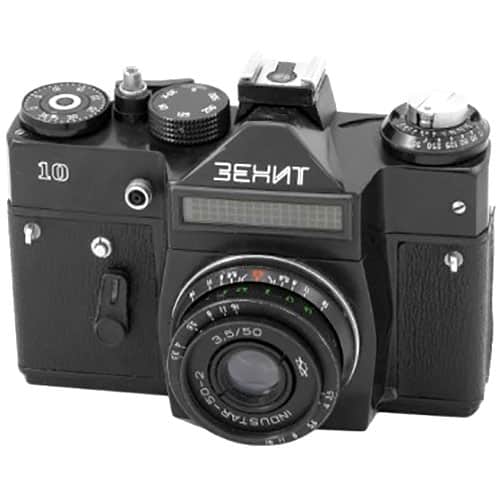Reporter
Reporter is a Soviet professional rangefinder press camera of 6.5×9 cm format manufactured by the GOMZ plant since 1939.
Reporter camera was released in very small quantities, less than 1000 copies. In this regard, it is very difficult to find both the camera itself and the data about it.
But in this article, we’ll try to tell you everything we’ve found about this rare large-format Soviet film camera.
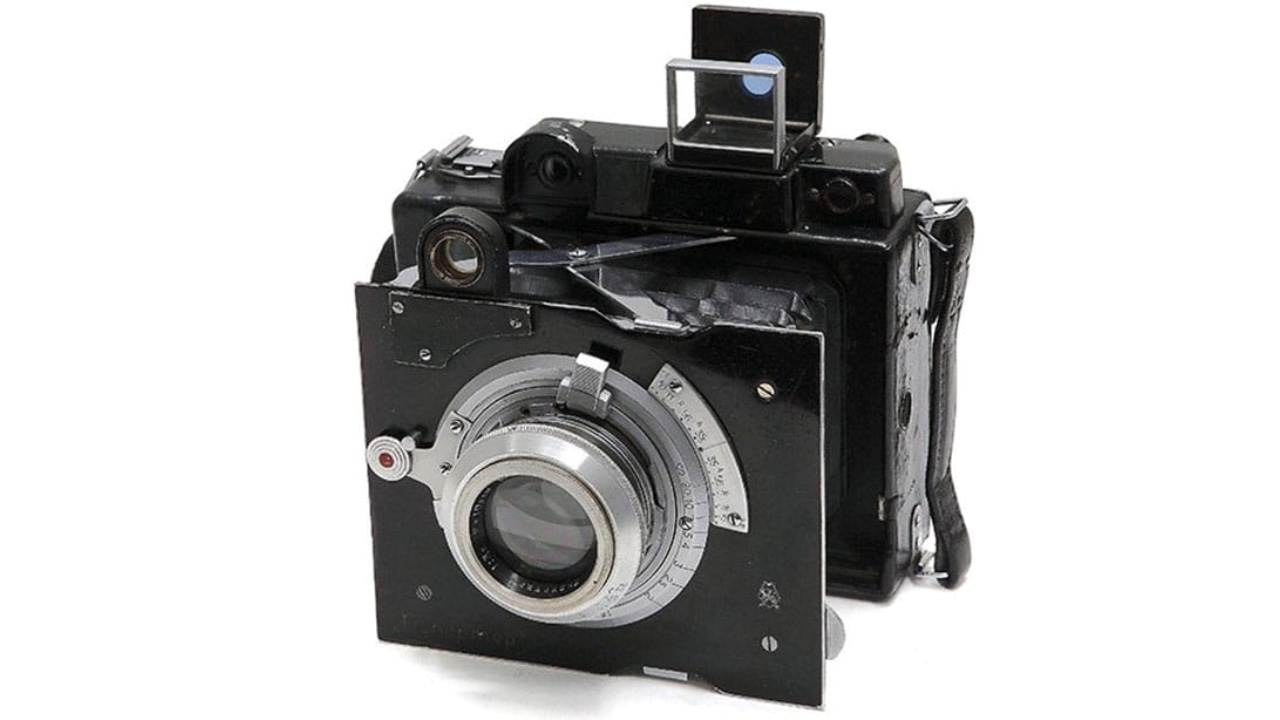
Reporter Specifications
- Type: 6.5×9 folding camera
- Manufacturer: GOMZ plant
- Production period: 1937–1941
- Format: 6.5×9 cm
- Lens mount: bayonet
- Lens: Industar-7 f/3.5 105 mm
- Shutter: cloth focal-plane shutter with speeds from 1/5 to 1/1000 sec
- Viewfinder: ground glass and rangefinder
- Light meter: none
- Flash synchronization: none
- Self-timer: none
- Weight: 1,460 g
Reporter Overview
The Reporter was a Soviet professional press camera developed in the late 1930s. Announced in 1937, it was the first serious attempt by the Soviet photographic industry to produce a high-grade rangefinder camera that could rival Western models in both technical features and construction quality.
Reporter Lens


The Reporter camera had a metal body and was equipped with an Industar-7 3.5/105 lens mounted via a bayonet connection.
This lens was based on the Tessar optical design and featured front-element focusing, which slightly altered the optical performance depending on the focusing distance.
The lens provided good sharpness across the frame and worked together with a leaf shutter offering a wide range of speeds.
Despite being developed in the late 1930s, this setup placed the Reporter on a level comparable to many foreign cameras of the same era.
Reporter Shutter



The shutter on the Reporter camera offered speeds from 1/5 to 1/1000 seconds, along with the usual B and D settings for long exposures. It was integrated directly into the lens unit.
Focusing could be done through the optical rangefinder or by using ground glass located at the back of the camera. The system allowed for relatively precise focusing for both portraits and landscapes.
The camera supported both sheet film (glass plates) and 6.5×9 cm roll film using an adapter, which made it flexible in studio and field environments.
Plans to introduce interchangeable lenses were also discussed during development, but they were never implemented.
Camera Body

The body was constructed from metal with fold-out bellows, designed in the style of professional folding plate cameras. A pop-up viewfinder and telescopic frame finder were included for composition, and the overall layout was clearly influenced by designs like the Plaubel Makina.
Serial production officially began in 1939, but it was soon interrupted by the outbreak of World War II. Fewer than 100 units were produced.
In 1961, the Arsenal factory (best known for the Kiev camera series) began development of a new medium format camera under the same name, but mass production never started.
Today, surviving examples of the original Reporter camera are extremely rare and are highly valued by collectors due to their unique engineering and place in early Soviet photographic history.

Conclusion
The Soviet Union was a unique place. Its authorities often declared that the country was the most advanced in the world – even as many things were being destroyed internally.
At the same time, however, there were practical needs that could not be ignored. Among them was the task of creating tools for spreading Soviet propaganda abroad, which required access to professional photographic and cinematic equipment.
But this was impossible without the availability of professional photo and video equipment in the country. First, the engineers were tasked with copying German cameras (mainly cameras from Zeiss Ikon), and in this way appeared EFTE, ARFO, and Fotocor.
Later, Moskva cameras were created, which well covered most of the needs of the majority of the people.
To fill the gap in the professional segment, Soviet designers made an attempt to create a high-end camera – the Reporter. Unfortunately, like many other professional projects of that era, it never reached mass production.
The outbreak of World War II, combined with economic hardship and limited resources, brought the effort to a halt.


